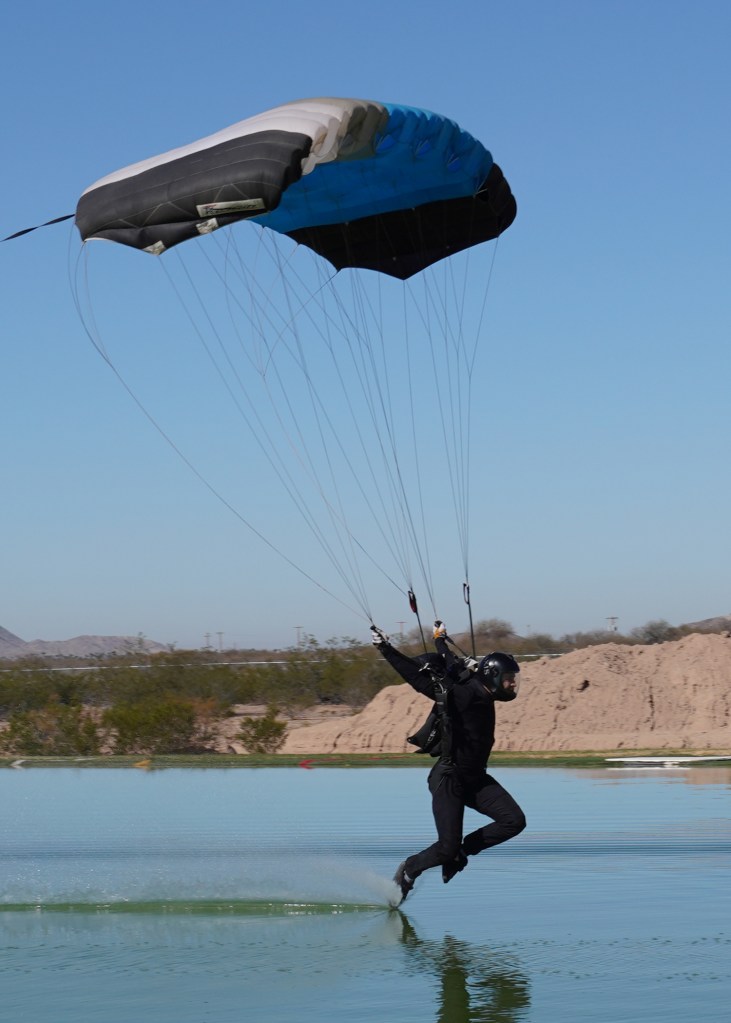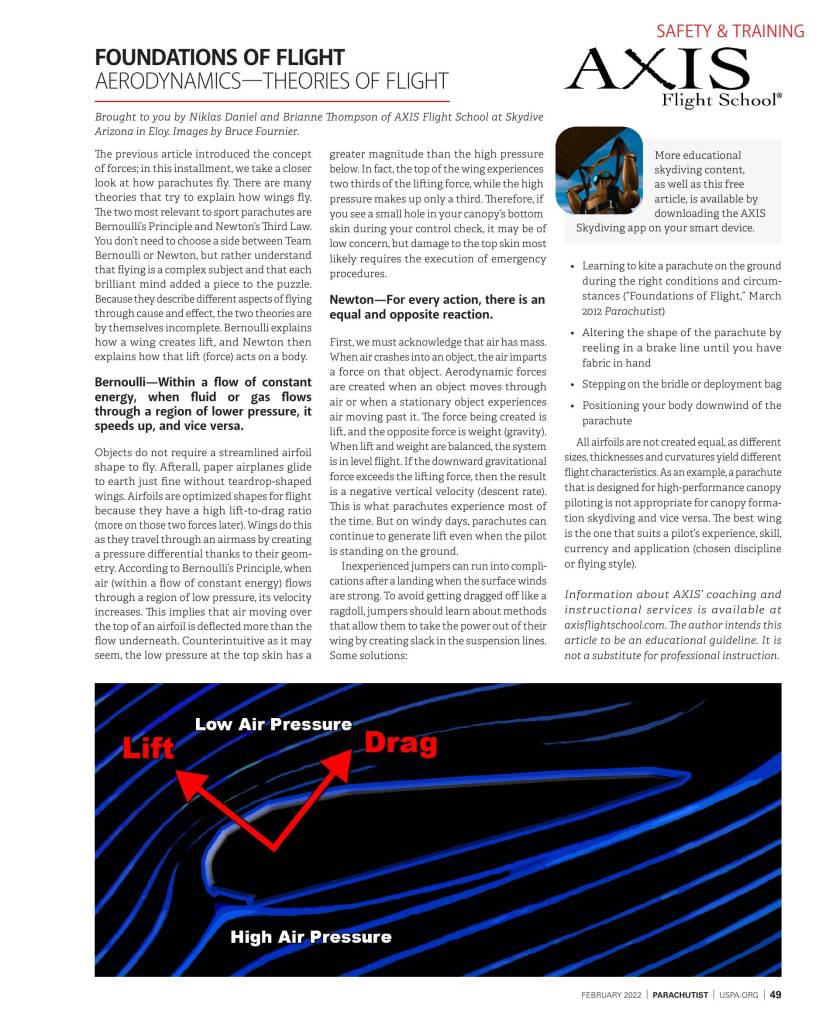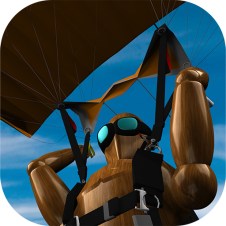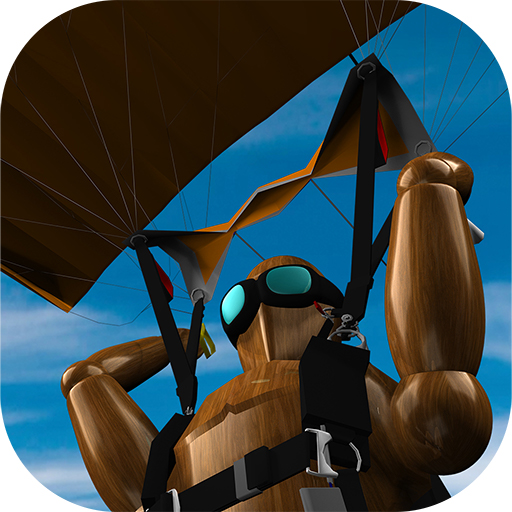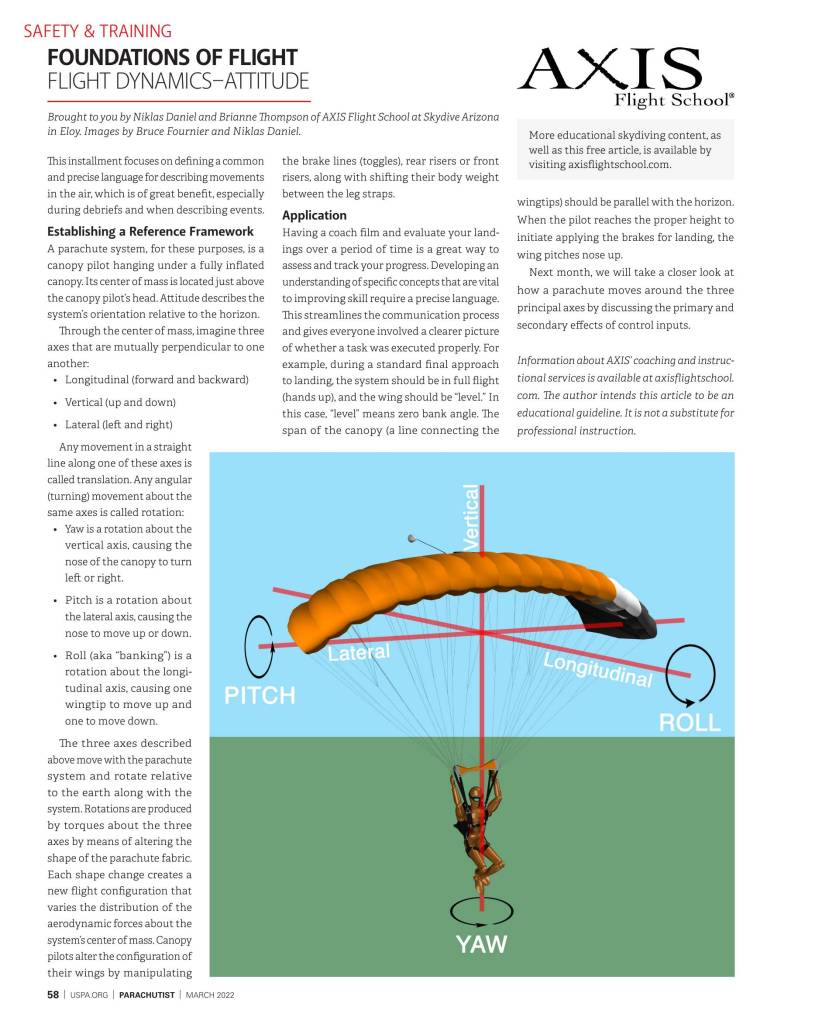
Category Archives: Swooping / Canopy Piloting
1st Swoop Du Jour Canopy Piloting Competition at Skydive Arizona
On February 18th, Skydive Arizona held its first local Swoop Du Jour canopy piloting competition.

M’m! M’ m! Good!
An informal Canopy Piloting competition where the main objective is for beginner pilots to learn the competition rules AND for the professionals to get practice. There were judges, prizes and soup.

Coaching and video debriefing was provided by PD Factory Team Member Justin Price. Competitors jump the course as many times as they want and the top three scores were used to determine standings.
There was a Pro-Class and a Beginner Class. The first competition focused only on Zone Accuracy Landings. Anyone who is signed off to land at the pond can participate in the upcoming Swoop Du Jour events. Future 2022 Dates: April 15 / June 4 / August 20 / November 19 / December 17
If you have any questions about the competition, reach out to Events@skydiveaz.com

Foundations of Flight | Aerodynamics – Theories of Flight
Image
Foundations of Flight | Ram-Air Parachute Anatomy—Airfoil
Image
Foundations of Flight | Ram-Air Parachute Anatomy—Cells
Brought to you by Niklas Daniel and Brianne Thompson of AXIS Flight School at Skydive Arizona in Eloy. Images by Bruce Fournier.

In the photo above, the area that makes up the canopy’s center cell is highlighted in red.
It is important for jumpers to have at least a rough understanding of the different areas and features of their ram-air parachutes. Whether you are trying to describe a specific part that needs maintenance to a rigger or you are discussing your last landing with a canopy coach, a common language and terminology can help avoid confusion. The following provides a look at the internal components of your parachute that are hidden from view.
Concept: Cross-Sectional Area
A cross section provides a two-dimensional view of an object as if it were cut in half, revealing details of its inner workings. This can help shed some light on very specific areas, although they will make up only a small piece of the puzzle. There are generally six vantage points from which to view a cross-sectional area. These are typically at right angles to the three axes:

Equipment: Cells (Longitudinal Axis View)
In the previous article we defined what a ram-air parachute is and how to check if it is working properly. Now we will take a closer look at what the air is being rammed into: the cells.
In simplest terms, a cell is the space that is occupied by air when a parachute is inflated. The word “cell” comes from Latin and means “small room.” In the case of a parachute, the ribs make up the walls, the bottom skin is the floor and the top skin is the ceiling. The nose (leading edge) of the parachute has openings that capture the relative wind, pressurizing the internal structure of the wing as the closed trailing edge traps it. We’ll cover more details about these features in the next issue.
A parachute can have any number of cells, but most common sport parachute designs have seven or nine. Most sport parachutes utilize a bi-cell design, meaning there are two rooms per cell. Therefore, each cell has three ribs, two which are called loaded ribs (because they have suspension lines attached to them) and one in the middle of the cell that is not loaded. The purpose of non-loaded ribs is to provide additional connection points between the top and bottom skin. This helps shape the parachute into a more efficient wing.
Information about AXIS’ coaching and instructional services is available at axisflightschool.com. The authors intend this article to be an educational guideline. It is not a substitute for professional instruction.
More educational skydiving content, as well as this free article, is available by downloading the AXIS Skydiving app on your smart device.
AXIS Skydiving App
Foundations of Flight | Ram-Air Parachute and Canopy Check
Brought to you by Niklas Daniel and Brianne Thompson of AXIS Flight School at Skydive Arizona in Eloy. Images by Bruce Fournier.

Welcome Back!
After taking a two-year break since the last Foundations of Flight installment, AXIS is excited to announce that it is back with a new focus and look. Past articles (available at axisflightschool.com and parachutist.com) covered a wide range of skills and disciplines, but the new series is focused on specific canopy-piloting concepts. Using illustrations from the AXIS Skydiving app, this column will discuss one aspect—such as construction, a physics concept, a procedure or a flying technique—of a specific piece of equipment. Think of this column as a supplement to professional canopy coaching and a conversation starter rather than a substitute for training.
Introduction
There is much more to a parachute than just a nylon wing and some strings. Each component—which includes the canopy pilot—contributes to the performance of the parachute. A skydiving parachute is first and foremost a lifesaving device that is intended to be deployed at freefall speeds. Therefore, their design and construction are in many ways limited by their primary function. The canopy ride is not a necessary evil that lets you jump again, but instead completes the skydiving experience with a skill set all jumpers share. Developing skill under a wing that is appropriate for your level of experience and currency is much more rewarding than rapidly downsizing or relying on gimmicks. If you are looking for higher performance, approach the progression as growing out of a wing rather than into one.
Equipment: Ram-Air Parachute
A ram-air parachute is a nonrigid-textile wing with an aerodynamic cell structure. Inflated by the relative wind, a parachute requires constant pressurization to produce an airfoil shape. This is accomplished by using the airflow created as a parachute moves through the air, which gives it the name “ram-air.” Most commonly made out of a ripstop nylon, ram-air parachutes are flexible wings which are capable of much more complex behaviors than a ridged fixed wing found on an airplane. Ram-air parachutes have an arc-anhedral design (curved), which places the wing tips below the level of the center of the wing. The arched wing shape has spanwise (side-to-side) bumps, which are the result of the bulging of each cell as they are inflated with air.
Concept: Canopy Check
To determine whether you have a properly functioning main parachute, ask yourself these three questions after you have thrown the pilot chute:
1| There? Visually confirm that there is parachute fabric over your head.
2| Square? Determine if the shape of the wing is symmetrical.
3| Flare? Ensure you can steer and land the parachute using a controllability check. This entails making left and right turns, as well as a full flare (a simulated landing).
If the answer to any of the above questions is “no,” and you are unable to remedy the situation, proceed with emergency procedures at or above your decision altitude.
Information about AXIS’ coaching and instructional services is available at axisflightschool.com. The authors intend this article to be an educational guideline. It is not a substitute for professional instruction.
More educational skydiving content, as well as this free article, is available by downloading the AXIS Skydiving app on your smart device.
AXIS Skydiving App
PD Sabre3 Demo Weekend at AXIS Flight School
Though the Performance Designs Tour Reps were not be able to make it out in person to Skydive Arizona this year – they shipped a whole box of Sabre3 demos to AXIS Flight School instead! Over the weekend, Nik and Brianne helped jumpers demo the new Sabre3. The canopies were 100% FREE to demo and available in 210, 190, 170, 150, 135, 120, 107, 97, and 89 square feet.

Photo by Kay Robinson
If you missed your chance to try out this amazing wing over the weekend, make sure to contact PD and ask them about their “Fly before you buy!” program. FYI, the box is currently on its way to Skydive Elsinore for next weekend 😉

Ray Lardizabal having a blast with the new Sabre3 over Skydive Arizona. Photo by Niklas Daniel.
The best things come in threes. For over 40 years the PD engineering team has challenged and proven what’s possible with modern canopy design. And they did it again. The Sabre3, the third canopy in a lineage of amazing, world-renowned wings, is not just a new wing, it’s a better wing. It redefines the Sabre name. Crisp handling, consistent on-heading openings, huge dynamic speed range, incredible landings, more power, and seriously responsive to inputs. PD Athletes and Test Jumpers agree that this will be one of the most sought-after canopies in the world for intermediate to expert skydivers, the next greatest all-around 9-cell modern canopy.


Nik’s Deland Fling
XF Dive Pool and Rules Updated
On January 4th, 2015 AXIS Flight School created an experimental dive pool for what was then referred to as XRW (Extreme Relative Work). This is a still developing discipline where canopy and wing-suit pilots build formations. In essence, an XRW skydive is a dissimilar formation flight.

Photo courtesy of Dan Dupuis.
The first dive pool developed by AXIS was called XF. The name change from XRW was proposed similar to how RW (Relative Work) was changed to FS (Formation Skydiving); and since CF (Canopy Formation) is already taken, the XF abbreviation was introduced for “Cross” Formation. The first draft only had 3 Randoms and 6 blocks.

Dive pool images from 2015

Since wing-suit technology has dramatically increased flight performance over the past few years, new formations have become possible. The updated 2020 version now features 8 randoms and 10 blocks dispersed over three classes: intermediate, advanced, and open. In addition, the XF rules have been updated to evolve with the times and practitioners can even make use of the AXIS DrawGenerator. There are now two orientations for the wing suit pilot to fly in:
- Normal (belly to earth) – indicated in gray, and
- Inverted (back to earth) – indicated in red.
Back in the day 🙂
AXIS coach Niklas Daniel started experimenting with XF back in April 2010, and has posted videos and written articles about the subject.
2010 – Nik’s first few attempts at Skydive Elsinore.
2011 – Training Camp at Skydive Arizona
2011 – MOAB Boogie.

Photo by Taya Weiss.
2014 – Getting a bit braver. Post by Blue Skies Magazine.

2015 – XF gets some exposure on Discovery Canada with first 3-way Night Formation.
Continued fun, experimentation, and introducing the discipline to others.

Wing-suit pilot and photo by Alex Swindle.
Fly Smart. Train Hard.

Photo by Samantha Schwann
Being competitors at heart, Niklas and Brianne do their best to improve on a daily basis. This applies not only to competitions, but also their business and life’s work – AXIS Flight School. AXIS has gone through an incredible online transformation, which could be called a “Cyber Grand Re-opening”. These changes have been taking place behind the scenes for over two years.
The AXIS website has always been packed with lots of useful tools and information. In order to make the site more user friendly and to keep up with the times more than a facelift was needed. In fact, we started over. Major improvements include a color coded menu system which is easy to navigate, condensed information on every page, and not to be overlooked – The AXIS Skydiving Repository. Here we developed a digital sorting system that categorizes all or our articles and reference materials for faster recall. Now users can search for categories such as solo skills, canopy, camera, and much more to find what you are looking for.

In addition, AXIS Flight School now uses sig.ma, a platform on which you can keep track of accomplishments, IDs, licenses, merits, etc. in a digital form. This allows us to send merits to students who have demonstrated their proficiency to our AXIS Coaches™ and acknowledge their achievements. Available Merits are displayed at the top of each web page, and their colors correspond to the new menu system.

Our online tools are still available to all for free. All AXIS dive pool images, Draw Generator, and ChronoPrism have all been updated with the new 2019 formations.

